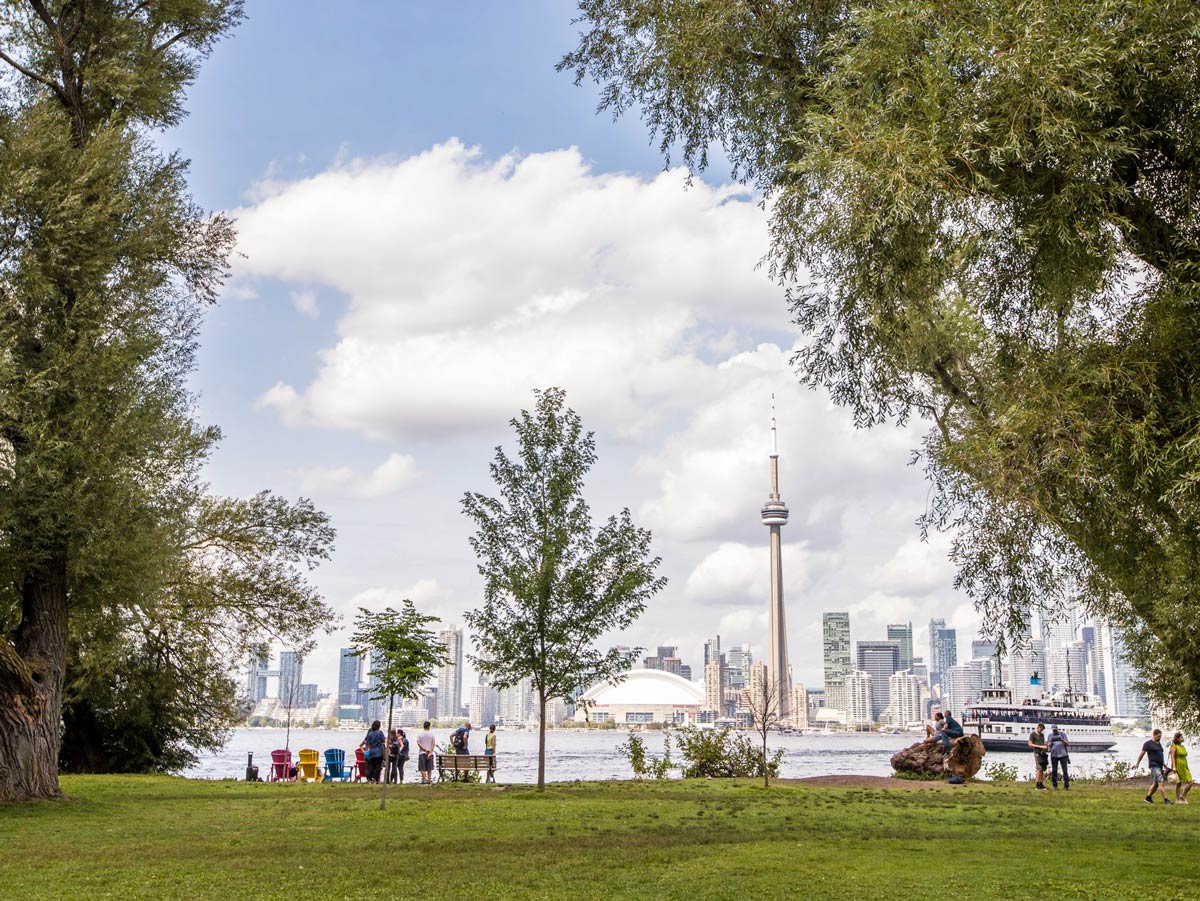Accessibility matters: Pathways to a more inclusive future
Innovation Issue 36: Spring 2022
Do sanctuary cities live up to the name?

Do sanctuary cities live up to the name?
Toronto is a sanctuary city – but recent research suggests that sanctuary cities like Toronto are facing obstacles in living up to their commitment to offer true refuge to undocumented migrants.
The definition of a sanctuary city is a municipality that has committed to limiting the local enforcement of federal immigration laws by providing non-status migrants with access to services without requiring information about residency status and by not sharing information about non-status migrants with immigration authorities, unless compelled to do so.
“The sanctuary city policy is faltering for a number of reasons,” said Toronto Metropolitan University law professor Graham Hudson, who is also the associate dean at the Lincoln Alexander School of Law. One of the primary failings of Canadian cities like Toronto that have taken on sanctuary city status is their fiscal reliance on provincial and federal governments, which professor Hudson writes about in a chapter for the book Migrant Protection and the City in the Americas (external link) . In Canada, there are seven sanctuary cities, including major metropolitan centres like Toronto, Vancouver and Montreal, and smaller urban centres like Ajax, Edmonton, Hamilton and London.
In his recent book chapter, professor Hudson explores the factors that interfere with the application of the policy, using Toronto as a case study. Taking a socio-legal approach, he examines the policies and procedures and compares them against first-hand interviews with city staff, councillors, members of migrant rights organizations and activists.
“There is not sufficient political will to make good on the ambitious goals of the policy,” he said. While other issues such as the environment, housing, poverty or racism have seen city councils lobby higher levels of governments for change, that has not borne out on the issue of non-status migrants. Moreover, the services most accessed by non-status migrants, such as health care, housing and education, are provided by other provincial or federal jurisdictions, further blurring the lines of ownership and responsibility of status data collected from individuals.
A lack of cohesion in how policies are applied across the city is also problematic, notes professor Hudson. He says the inconsistencies could be attributed in part to the bureaucratic complexity of cities, making it difficult to achieve standardized approaches across all departments and geographic areas. Individual staff members are interpreting the intention of the Sanctuary City policy and applying it on a case-by-case basis, which leaves much room for individual bias. “They have this discretionary power to say ‘I’m not going to help you’,” said professor Hudson.
In taking this examination further, professor Hudson collaborated with co-authors Toronto Metropolitan University professor Harald Bauder and graduate student Mia Hershkowitz on their working paper “Rescaling the Sanctuary City: Police and Non-Status Migrants in Ontario, Canada (external link) ”. In this paper, they look at the intersection of observing sanctuary city policies around protecting the identity of non-status migrants in the provision of services, and at the authority and imperative police have to share non-status identities with federal authorities.
The co-authors suggest that municipal police are overstepping their jurisdiction when providing information to the Canada Border Services Agency (CBSA) about non-status migrants.
“I’m making the argument that quite aside from a moral or ethical paradox, what police are doing [in sharing information with the CBSA] is illegal,” said professor Hudson. The paper explains that in 2008 the Toronto Police Service’s own Immigration Legal Committee “parsed through available laws relating to police powers in the realm of immigration law, concluding in May that local police lack an identifiable obligation within provincial or common law to report to or cooperate with the CBSA.”
Professor Hudson believes that in order to draw clearer lines around the abuse of individual rights when it comes to non-status migrants, it’s important to frame the issue in the context of police power and racial equity. “The reality is that when police are involved in border work, they are stopping people of colour, typically in the context of racial profiling,” he said. “They are stopping people of colour and asking for identification, and when they don’t have that identification, it raises issues around status.”
Connecting these issues adds more context and raises the stakes even more, adds professor Hudson. “Because non-status migrants are not citizens, we are not talking about them in the context of racial profiling. People don’t recognize it as an issue.”
Addressing these issues in meaningful ways will require different levels of government to engage in a multi-layered and collaborative approach. Strengthening sanctuary city policies and improving the quality of life for non-status migrants require several players at the table. This work can be done through migrant advocacy groups applying pressure at different levels of government, combined with grassroots advocacy from professionals in fields such as health care, education and law, and frontline city staff workers who can translate the advocacy into bureaucracy, all working in tandem.

In order to draw clearer lines around the abuse of individual rights when it comes to non-status migrants, it’s important to frame the issue in the context of police power and racial equity.

Funding for this research was supported by a Social Sciences and Humanities Research Council of Canada Insight Grant.
